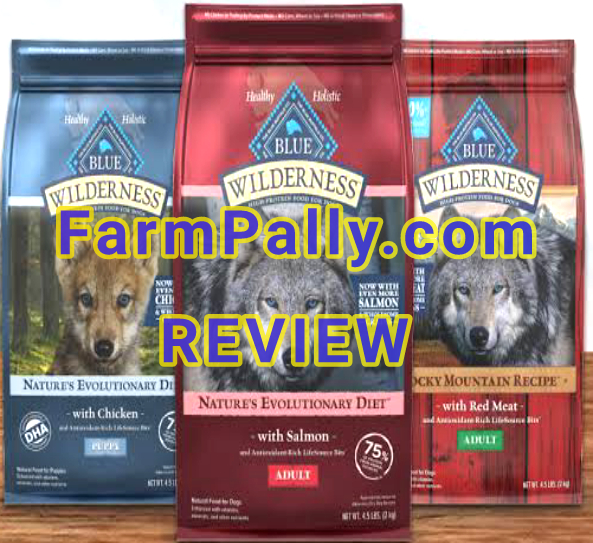BLUE Wilderness is one of Blue Buffalo’s pet food lines.
No doubt, Blue Buffalo is one of the top 10 big pet food brands in the US, with USDA-approved facilities in the United States.
It sources quality ingredients globally, and produces premium, and mid-tier quality pet foods.
Blue Wilderness is one of their high-protein, nature’s evolutionary and human-grade diet lines.
Blue Wilderness has a high protein profile because it’s formulated around real meat – chicken meal, chicken fat, and whitefish meal first, and fewer grains.
It has grain-free and wholesome-grain recipes formulated with human-grade ingredients across dry, wet, toppers, and treats product categories.
Blue Wilderness also has Select formula puppy, adult, and senior life stages.
Is Blue Wilderness Good or Bad?
Yes, Blue Wilderness is healthy for dogs, and veterinarians do recommend it, and other Blue Buffalo products.
The main ingredients of Blue Wilderness are chicken meal, chicken fat, salmon, duck, lamb, whitefish meal and turkey as animal protein sources.
Dried plain beet pulp, brown rice, pearled barley, ground flaxseed, ground grain sorghum, yeast culture, brewers dried yeast, and sweet potatoes are plant protein, carb and fat sources.
As a product line, it has over 20 products suitable for dog life stagesbreeds, and sizes.
The grain-free formula has chicken, salmon, duck, lamb, and turkey Select formulas while the wholesome-grain has salmon or chicken as main ingredients.
What’s the customer experience like?
While Blue Wilderness’ rating is good, there are some controversies surrounding their foods.
Vets, breeders, and experienced pet owners share their views towards their grain-free diets which are not always a better option for every dog.
Some praise them for their highly digestible products, absence of artificial colour, flavour and preservatives.
Some customers expect matching formulas to individual dog health needs such as allergies, pancreatitis risk, cardiac issues, while others find Blue Wilderness wet food good for their dogs with allergies.
Is Blue Wilderness Better than Purina and Royal Canin?
Blue Wilderness emphasises higher meat content with no by-product meals, limited artificial additives, but a little bit pricey, which is of course a disadvantage.
I don’t think Blue Wilderness is any way better than Purina and Royal Canin on all fronts, but it probably has a higher protein profile.
For example, the Purina premium line offers broader clinical formulas, extensive veterinary trials, and often a lower cost per pound.
Similarly, Royal Canin focuses on breed, life-stage, and condition-specific formulas backed by nutrition research while Blue Wilderness focuses on enriched light meals with fewer fillers.
Blue Wilderness products are also enriched with vitamins and minerals such as potassium chloride, monosodium phosphate, lysine, methionine, and other nutrients.
Suitability by age, size, and weight
Blue Buffalo Wilderness offers life-stage formulas. Small breeds and puppies Select formulas have kibble-sized foods, higher calories and DHA for growth.
Adult and large breed formulas are designed to maintain protein levels, tissues and muscles while old dogs benefit from joint-support lean muscle mass support formulas.
Conclusion
If you prefer a meat-first, higher-protein commercial dog food with transparent ingredient lists, BLUE Wilderness is a good option.
It’s rich in fibre, digestible energy sources like sweet potato or brown rice protein, and fats, and without poultry by-product meals, corn soy, wheat soy, and additives.
Some premier blend mixes include grains such as barley or oatmeal, while grain-free lines substitute tubers like sweet potato with added fish oil or menhaden for omega-3s, blueberries or carrots as veggies for natural minerals.
Blue Wilderness is a healthy and safe product you can trust.

Growing up in a family deeply rooted in agriculture, I developed an early passion for cultivating the land, caring for animals, and exploring sustainable ways to improve farm productivity.
I’ve worked extensively across multiple areas of agriculture, food and cash crop cultivation, poultry farming, fish farming etc.
At FarmPally, I enjoy sharing practical insights drawn from real-life experiences to help farmers, pet owners, and agriculture lovers make informed, and sustainable decisions.

